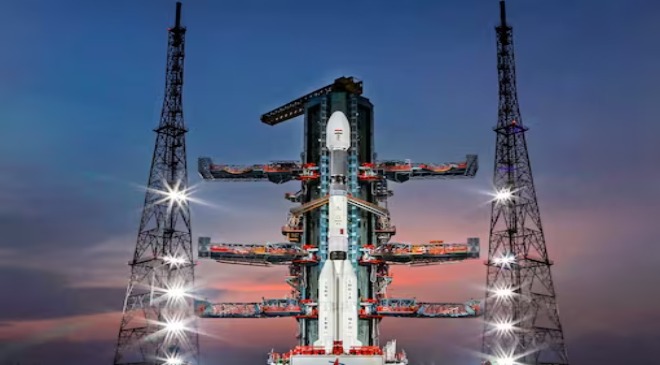Chandrayaan-3 is a follow-on mission to Chandrayaan-2 to demonstrate end-to-end capability in safe landing and roving on the lunar surface, ISRO said
Indian Space Research Organisation’s (ISRO) third lunar exploration mission — Chandrayaan-3 — has been scheduled to be launched somewhere between July 12 to 19.
Read More: Weather alert: El Nino effect likely in July, heavy rainfall across India
Announcing the launch, ISRO chief S Somnath said that, “currently the Chandrayaan 3 spacecraft is fully integrated. We have completed the testing…Currently, the window of opportunity for launch is between 12-19th July.”
“We will announce the exact date after all the tests are completed,” Somnath added.
Chandrayaan-3 is a follow-on mission to Chandrayaan-2 to demonstrate end-to-end capability in safe landing and roving on the lunar surface, ISRO said.
WHAT IS CHANDRAYAAN-3?
The Chandrayaan-3 spacecraft is the third lunar exploration mission planned by ISRO. It serves as a continuation of the Chandrayaan-2 mission and aims to showcase the complete capability of safe landing and roving on the lunar surface.
Read More: Only 5% of Thermal Capacity Meet Pollution Norms; Plants in Eastern States Non-Compliant: CSE Study
The need for Chandrayaan-3 arose after the unsuccessful landing of the Vikram lander during Chandrayaan-2. This new mission is designed to demonstrate the essential landing skills required for the proposed lunar polar exploration mission in 2024, which India intends to carry out in collaboration with Japan.
FEATURES OF CHANDRAYAAN-3 SPACECRAFT
Chandrayaan-3 will consist of a rover and lander, without an orbiter like Chandrayaan-2. The mission aims to explore the Moon’s surface, particularly areas that have been deprived of sunlight for billions of years.
Scientists and astronomers suspect the presence of ice and valuable mineral resources in these dark regions. The exploration will not be limited to the surface but will also focus on studying the sub-surface and exosphere, as per reports.
The rover will communicate with Earth using an orbiter borrowed from Chandrayaan-2. Surface analysis will be conducted by capturing images from a distance of 100 km above the lunar orbit.
Read More: PM Modi Congratulates Indian Athletes For Incredible Success At Special Olympics
DESIGN OF CHANDRAYAAN-3 SPACECRAFT
The lander of Chandrayaan-3 will be powered by four throttle-able engines and will feature a Laser Doppler Velocimeter (LDV).
IMPORTANCE OF MOON EXPLORATION FOR SCIENTISTS
The Moon provides a nearby testing ground for space technologies and serves as a platform for preparing for future extensive space missions. It offers opportunities to gain a better understanding of extraterrestrial territories and fosters technological advancements.
Moon exploration inspires and motivates future scientists while promoting international collaborations.
It provides insights into the history of the solar system and the early stages of Earth’s formation, according to reports.





































